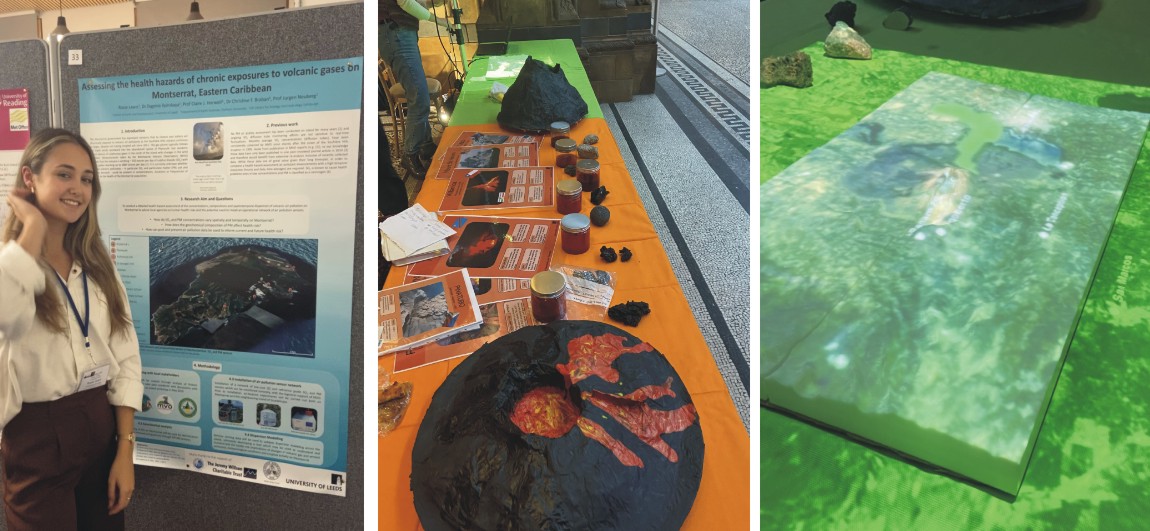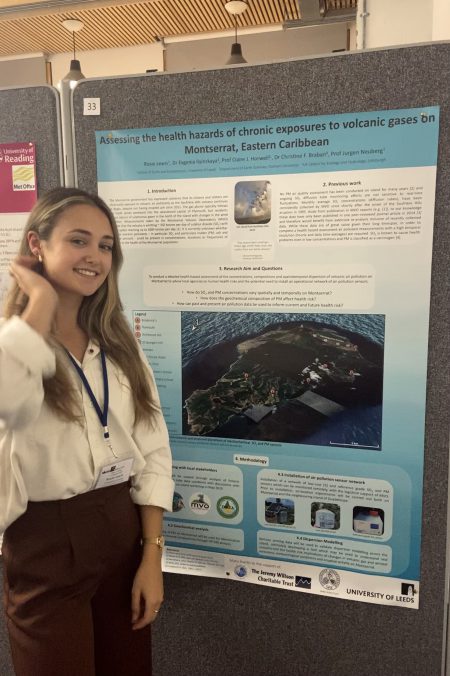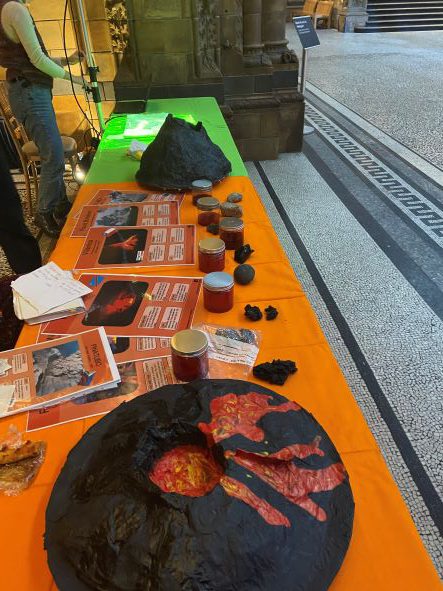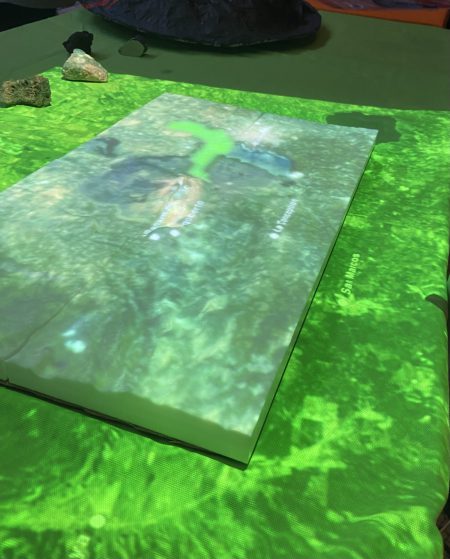
EAG Sponsored Student Rosie Lewis presents her Volcanological Research with a bang!

With the generous support of the EAG, I was able to attend the annual meeting of the Volcanic and Magmatic Studies Group (VMSG), a special interest group of the Geological and Mineralogical Societies. This was the first conference I have ever attended, and gave me the valuable opportunity to present my ongoing PhD research for the first time and receive feedback from the wider community.
It was particularly useful to be able to talk through my research plans with people who have previously worked on monitoring volcanic gases, or who have direct experience with conducting fieldwork on Montserrat.
Overall, presenting at the conference was a very positive experience both personally and professionally, as it allowed me to integrate myself as part of the volcanological community.
Volcano Day Outreach Exhibit at the NHM London
Following the conference, I led an outreach exhibition at the Natural History Museum, London, to celebrate ‘Volcano Day’. For this, myself and a team of fellow PhD students worked in collaboration with a visual science artist to create an interactive ‘spectrum’ of volcanoes, where we showcased the range of geochemical compositions of volcanic rocks and gases, with a visual projection of the geochemical evolution and movement of a volcanic plume projected onto a 3D model of Masaya volcano.
It was especially rewarding to see how much the younger audience engaged with our ‘Volcano top trumps’ game, where we asked them to match up fact-sheets of different historic eruptions to papier-mâché models of shield and stratovolcanoes, and different lava viscosities (shown by different substances in containers).
It was great to practice transitioning from presenting my research to experts in the field, to engaging young children in volcanology and geochemistry. This helped me to develop skills directly relevant to my project, as my fieldwork will involve significant community engagement.

Top Tips for First time Conference Attendees

All in all, it was a jam-packed week of workshops, presentations, networking and outreach. Here’s some advice I have for other students attending VMSG, or another conference for the first time:
- Try to plan before you arrive at the conference – ask yourself the following questions: What do I want to get out of this conference? Who do I want to meet? What do I want to ask them? What do I want to learn more about?
- Conferences are tiring! The constant networking means that even in your ‘breaks’, you don’t really get to relax, so make sure to give yourself time to recover afterwards, particularly if you have a long journey home.
- Dress however you feel comfortable. I chose to dress smart-casual as wanted to feel professional when delivering my presentation, but there was a broad range of outfits across the attendees and almost anything would have been considered appropriate. I would also advise bringing lots of layers as it can get very warm in a crowded lecture theatre, even if it’s cold outside!
- Try to diversify your network– chat to people from different institutions, countries, disciplines, and stages in their career. Don’t be afraid to approach anyone, people come to conferences to meet others!
- Present something! Even if you don’t have many results yet, it’s a great way to get your name out there and start conversations with other researchers in your field. It’s also great practice for when you do have results to present- practice makes perfect!
About the author
Rosie Lewis is a 1st Year PhD student in Volcanology at the University of Leeds, UK, with an academic background in Physical Geography (Manchester) and Climatology (Cambridge). Her project is titled ‘Assessing the health hazards of chronic exposures to volcanic gases on Montserrat, Eastern Caribbean’ and adopts a community-focused, multi-disciplinary approach. She is particularly interested in the performance of low-cost electrochemical air pollution sensors.

